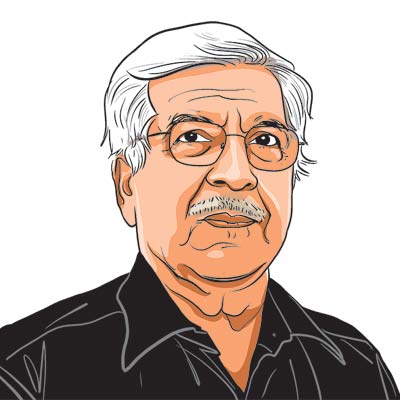Opinion Bitter sweet
Sugar reform is half-done,so theres none in stores...
When it was suggested that I write on the sugar conundrum,I was initially sceptical. After all,in a globalised economy,we should take the downside sportingly so imports of essentials,if scarce,are the obvious way out. In a trading economy bless the Brazilians,Mauritians and others with plenty of land and big subsidies we can import all the sugar we want. In the last sugar cycle,in the early part of the decade,the sugar industry continued to be protected at 60 per cent-plus tariff rates the envy of poor cotton producers,who were at the time introducing breakthroughs with so-called illegal BT cotton seeds but without any protection at all. Government eventually allowed free import of raw sugar for mills. Refined sugar imports are still largely controlled.
This is a problem embedded in history. At forty,when I became Chairman of the Agricultural Prices Commission,the sugar industry had just come out of a trough. Charan Singh had decontrolled sugar,telling his Jats at the height of the peak to grow cane on [his head. But I remembered my economics,specifically the agricultural cobweb and I knew that would lead to a cycle.
Sugar,unlike other crops,is an 18-month crop. So its more
susceptible to over-correction. As now,so it was then: in UP,the farmer would go by last years high price,overproduce,and there would be a crash. We couldnt fix it with my equations and my ACP charts; so we went into the mandis and mills,in Modinagar and Moradabad,in Kolhapur and Sangli and in Barabanki. Turns out the farmer doesnt make money only out of selling cane to the factory; he also makes gur,so his return is both what the mills give him and what he makes from gur where in oversupply his return falls. So,back then,we were protecting farmers stuck to each mill,as well as the mill itself. The cost of processing could be brought down by 25 per cent if crushing capacity went above 2,400 tonnes a day. We suggested giving it all up in three years.
The empire hit back then. Which was alright,I suppose. But it continues to do so a quarter of a century later,which is sick. There is still a minimum support price of cane,Rs 81 per quintal. Raw sugar import is truly confused: we must be the only country to try and reconcile an open general licence (free-to-import) with being licensed against advanced licensing. What a web we spin.
The Mahajan Committee and the Tuteja Committee repeated what I had said first in 1982,and then somewhat loudly in 1984: dump the one-to-one connection between farmers,a mill and pricing. Its all done,I was told,and since younger,more competent people must have done it,went off to a good nights rest. But the states still declare an
L-factor which is the unit cost of production for each sugarcane zone; profit-sharing is done accordingly and the proposals for rationalisation are stuck in legal hassles. We have buffers and work them in the age-old government manner,paying lip service to futures,which we ban when we are in a bad mood.
There is still the 1982 report of the price committee,and many others beyond. Gur may no longer be important; but the CACP and Abhijit Sen still say: work a flexible tariff and then walk away. Of course,set it as a relative tariff to other competing crops; give some protection to the mills by relating to the tariff of raw sugar; give powerful financial incentives to go to optimal size in factories and recycle to save costs which will also be environmentally benign because you save energy and pollutants; go into tissue culture. But do it right now because the elections may be imminent in Maharashtra and Haryana,but the costs of the politics will be borne by UP. Show UP how to grow horticulture crops,the way the cane belt diversified in Nashik and Nagar. If they dont know send NABARD chief Sarangi after all,he did it as a young collector in Nashik. You dont get grapes,wine and onions for export in a formerly water-guzzling sugarcane region without a vision. And you can also diversify into knowledge,even though the Knowledge Commission doesnt know how and the HRD ministry doesnt care how. A small sign: an IT-NGO Chair at Rahata,in the Pravara sugar factory complex,received on Thursday,Rajiv Gandhis birthday,the IT-HRD Maharashtra Technology Award 2009 from Maharashtras department of industry.
Alright,if necessary,wait for the elections to be done before starting the reform. But use this crisis: set a date to compete with the Brazilians for cheap,plentiful sugar.
The writer,a former Union minister,is chairman,Institute of Rural Management,Anand express@expressindia.com





